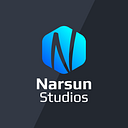Types of Software development
The success and failure of your product depends upon the type of software development process that you choose. To bring your project to life, developers employ a variety of methods. Each software development process has its own set of strengths and limitations, as well as a distinct reason for being used.
The style of software development you select is important because it provides you with a solution for your every problem, from anticipated delivery dates to full control over your project and high-quality output.
Let us look at the eight common types of software development and why to choose one over the other or is a hybrid approach a solution for you.
1. Embedded Systems Development
Embedded systems development is moving at a fast pace, thanks to the emergence of Internet of Things (IoT). Embedded software development generates code for various platforms, machinery, different devices, and equipment that aren’t standard computers, utilizing programming languages that are very specific.
2. API (Application Programming Interface) Development
API development, which stands for Application Programming Interface, is creating the requirements and instructions that is allowing programs to connect with one another. You utilize an API every time you are using a social networking app or checking the weather on your phone.
3. Database Development
Database development provides businesses with the software and tools that they would be needing in order to manage and classify their data. A proper plan and strategy, analysis and statistics, layout or framework, execution, and maintenance are all part of its life cycle.
4. Back-end and Front-end Development
The client-side of any app or product is handled by frontend developers, they address problems and ensure that the user interface works across multiple platforms. Their role isn’t the same as that of a user interface (UI) or user experience (UX) designer, even though they do handle the user interface (UI). Back-end development is concerned with all the coding and basic framework of a product that is not visible to the user. It ensures high-performance, scalability, and security of the software.
5. Feature-Driven Development
Feature-Driven Development (FDD) is a sequential and gradual procedure of software development that is extracted from Agile methodology. FDD, like waterfall, is now considered an ancient approach, but small development teams can still benefit from it.
6. Full Stack Development
Stacks are an amalgamation of sub-clusters that work together to make an app or feature of the software. Full-stack development encompasses both the front-end and backend of a product. It manages the entire development process, from conception to launch.
7. Mobile Development
Apps for mobiles, tablets, and smartwatches, operate natively. Professionals who have expertise in mobile development usually work either with iOS or Android, but not both at the same time, because they are qualified usually in a certain domain.
8. Web Development
Web development, as the name implies, is a process of creating web-based apps that are accessible for people through their phones and PCs as well as on various other devices. Mobile apps, on the other hand, run on smartphones or tablets and don’t always require internet connection to function.
To help develop customized software or even a consult about which process of software development is best suited for your business, get in touch with Narsun Studios today. We help craft apps according to your needs and help your business flourish.
